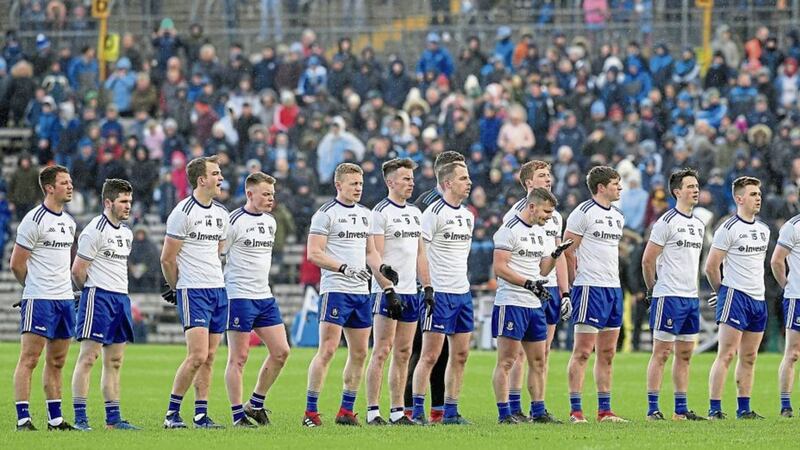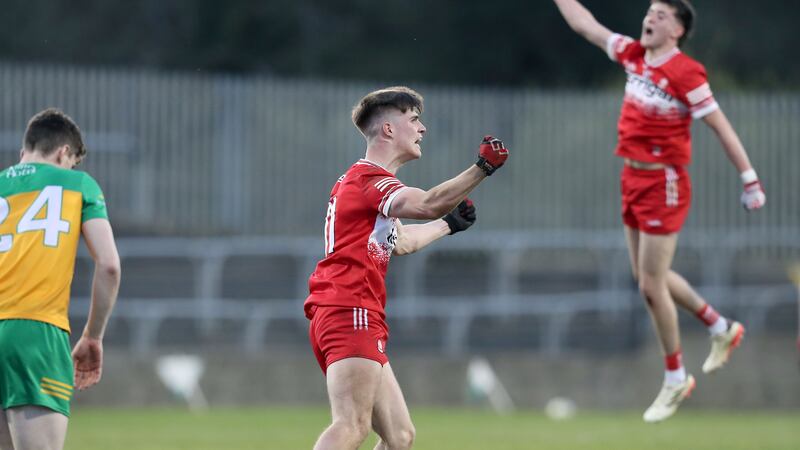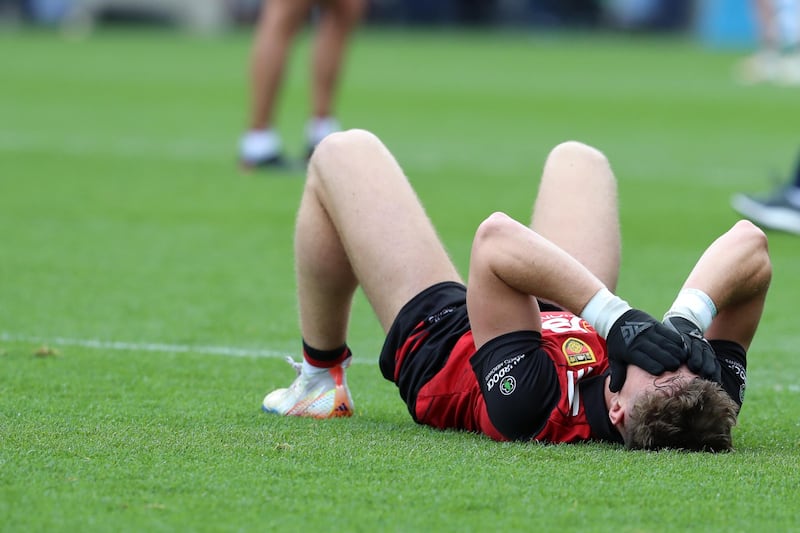MONAGHAN made sure the season started with a bang with both the biggest result of the weekend and the most eye-catching display of the potential impact of the new rules.
I would have no doubt that many inter-county management set-ups will have pondered Monaghan’s use of the advanced mark. Dublin, not long back from their holidays and perhaps without much training under their belts, were obviously somewhat rusty. They were also missing several regular starters,but then their replacements are rarely inferior. Going on Malachy O’Rourke’s comments, Monaghan haven’t exactly been pulling up trees on the early-season training grounds either, thus remain in a fairly raw condition themselves.
In any case, any win against Dublin is notable and the fact that the advanced mark was essentially the winning weapon means the rule has suddenly arrived front and centre into the spotlight.
The impact of the attacking mark shows, in a way, how trying to assess or pass so many rule changes in one sweep always seemed a fool’s errand.
When trying to change so much simultaneously, some tweaks were going to get much more attention, while others would be forgotten about or their impact overlooked.
The controversy of the three-handpass rule already seems a distant memory. Monaghan’s exploits have changed the mood music over the past week, which has been hugely positive, and means many camps will be beginning to think again.
In my previous analysis of the rules, I accepted how it might encourage longer and faster kicking of the ball to the inside lines, which is certainly more attractive and exciting than the multi-phase lateral passing which it was trying to replace.
However, I still had reservations that the obvious counter move would be to kill off the space more effectively that people are kicking into, thus encouraging a blanket defence, or that we would move to more Australian Rules-style stop-start attacks rather than the flowing moves that epitomise football at its best.
The tweaking of the rule where any pass of sufficient length played from outside the 45m line is now caught clean and rewarded inside the 45m line instead of inside the 20m line has been very important in handing the advantage to the attacking team.
Read more: Cahair O'Kane - Monaghan are overdue a bit of respect
Monaghan’s display exemplified the best use of the rule and, against no less a team than Dublin, provokes several more issues which merit further consideration.
‘Defending shepherds’ days could be numbered
MODERN defenders, used to the zonal defensive systems, have been foregoing competing all-out for possession in favour of an ‘if in doubt, let the man win it and know he still has to find a way past you and all your mates’ approach.
That lack of aggression in competing for possession is exposed harshly with the mark. If on McManus, for example, his kicking accuracy means that a mark is a great chance of a score. Defenders will have to stick much tighter and compete much harder for that primary possession.
That, for me, is a welcome change as too many bluffers and shepherds can get away without being exposed in the zonal defences.
Clever movement is absolutely key
CONOR McManus has been an absolute genius in terms of the playing of International Rules. He almost single-handedly took the game to Australia last year. It is his movement that is key and he was in his element against Dublin on Sunday.
Runs can be left later and can be made to positions or at angles which were previously not viable as your options in terms of beating your man or passing it off were limited.
Now you can just stop and take a free kick. A run wide towards the end-line that was a no risk ball for a defender is no longer the case. A man catches here and then jogs out for a good chance free from the 20m line.
Sweepers might need to put the brushes away
GIVEN the large area that is now open to the mark, deep-lying sweepers may be deemed useless as a mark taken renders all other defenders in the vicinity useless too as the forward has a free pop at the posts.
It is the equivalent of a team with blanket defence coughing up cheap frees. It’s a complete no-no as it renders the blanket ineffective.
Managers will have to stick or twist
DO they deploy additional sweepers in the defensive area to prevent the marks being won or do they abandon the zonal defence and push out to pressure the kick in?
The use of ‘target men’
TARGET men tend to be big and physical. In terms of size, they tend to be an easier target to find. In terms of strength, they are more able to fend off defenders. They also tend not to be particularly accurate.
For every Michael Murphy or Damien Comer, there is a player who, if he wins the ball, has the issue of trying to do something with it via his three left feet. Marks are only useful if the player taking them is accurate. Add in the pressure moments in big games, a critical mark will need a player of substantial quality and nerve to make any use of it, otherwise it is a wasted possession. It isn’t hard to foresee that, given the right moment, a player whose shooting rarely exercises the scoreboard, may unfortunately tweak his ankle or hamstring, rendering him unable to take the critical kick and leaving a more accurate team-mate to hit it. Now while I realise cynical, rule-bending isn’t part of the GAA, I’m just saying that I could see it happening.
Ingenuity and flair are still the match-winners
DESPITE Monaghan getting so much praise for their application of the mark, their two key goals both arrived from decisions to play on when a mark was available.
Stephen O’Hanlon’s goal in particular stands out as, realistically, it was the ‘wrong’ thing to do.
The game was all square with 25 minutes left to play. The right thing is to chip away at the easier scores. Instead, winning a ball close to the sideline and from a narrow angle, he automatically attacked hard, catching all unaware and striking the game-changing goal.
This flair and spontaneity is so key to the excitement and beauty of our games that it, along with flowing attacking football, must be preserved.
This mightn’t make sense given how it worked so well in this case, but for me the mark, in general, is more likely to bring about a structured and stop-start nature to attacks with a greater percentage of scores coming from free shots rather than play.
SO the mark has made its, ahem, mark, but for me there is still much to ponder. It is clear that many managers and teams have not given much coaching time to the offensive or defensive impact of the rules, preferring simply to ignore them. As the race for points hots up, this may change.
Despite my initial reservations the mark could be a game-changer, but I remain to be convinced as it does bring drawbacks as well. One swallow doesn’t make a summer and, given we are still in January, it mightn’t even make the spring. The next few weeks will be interesting indeed.








